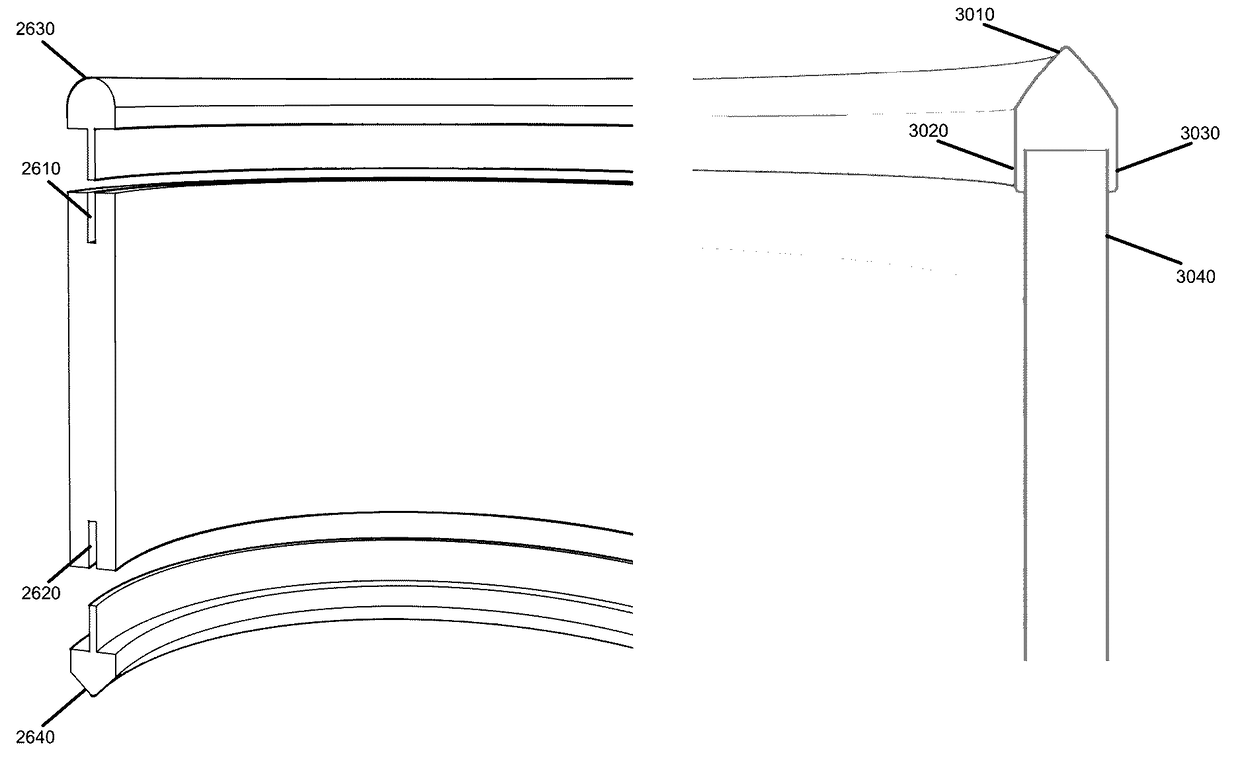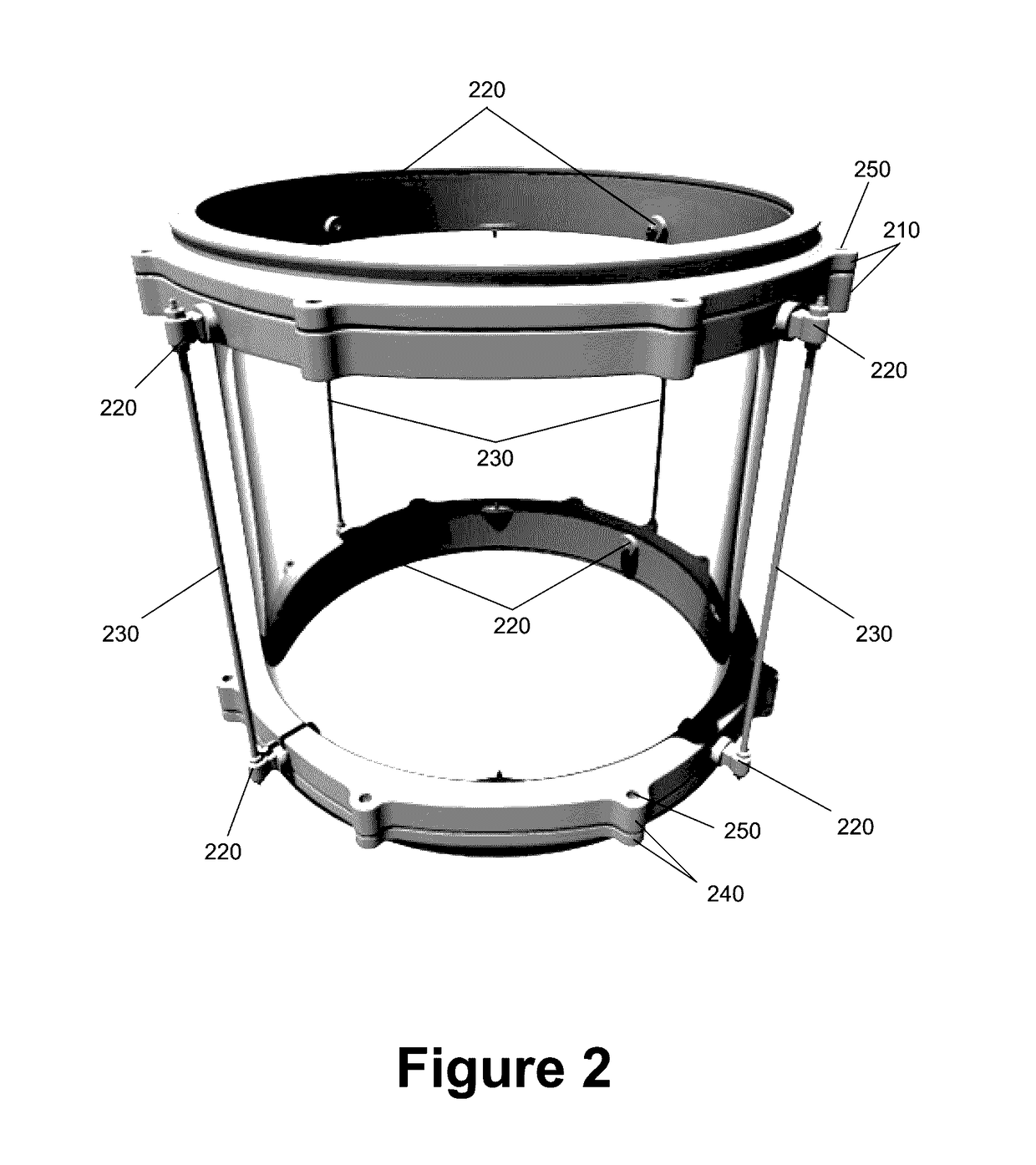Interchangeable drum bearing edge rings
a technology of edge rings and drum shells, applied in the direction of instruments, percussion musical instruments, instruments, etc., can solve the problem of needing a thicker drum shell
- Summary
- Abstract
- Description
- Claims
- Application Information
AI Technical Summary
Benefits of technology
Problems solved by technology
Method used
Image
Examples
Embodiment Construction
[0047]FIG. 2 illustrates the ultimount drum design and structure of some embodiments. In differing from drum designs and structures of the prior art, the ultimount couples the drumhead to the drum shell in a manner that does not hinder resonance of the drum shell and in a manner that isolates the non-sound producing supporting framework from the sound producing drumhead and shell. In so doing, the ultimount provides several advantages over drum designs and structures of the prior art. First, the ultimount provides a richer and fuller sounding drum because the ultimount does not hinder resonance of the drum shell during play. Second, the ultimount eliminates undesired sound and distorted sound from the overall sound profile of the drum because of the isolation of the structural framework from the sound producing elements of the drum. Third, the ultimount allows for the manufacture of entirely new drum shells because the ultimount removes extraneous forces that are imposed on the drum...
PUM
 Login to View More
Login to View More Abstract
Description
Claims
Application Information
 Login to View More
Login to View More - R&D
- Intellectual Property
- Life Sciences
- Materials
- Tech Scout
- Unparalleled Data Quality
- Higher Quality Content
- 60% Fewer Hallucinations
Browse by: Latest US Patents, China's latest patents, Technical Efficacy Thesaurus, Application Domain, Technology Topic, Popular Technical Reports.
© 2025 PatSnap. All rights reserved.Legal|Privacy policy|Modern Slavery Act Transparency Statement|Sitemap|About US| Contact US: help@patsnap.com



